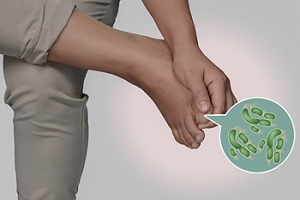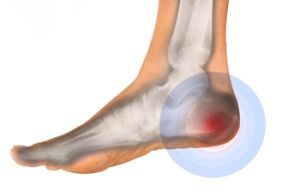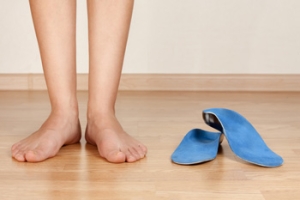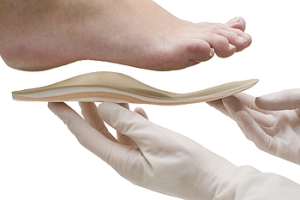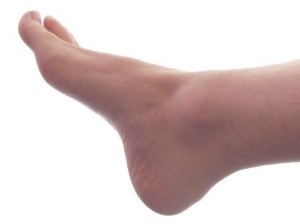
How to Handle a Long Work Day on Your Feet
In 2014, the American Podiatric Medical Association surveyed 1,000 American adults and found that half of all respondents lived with foot pain. Fortunately, there are ways to avoid foot problems such as following a daily footcare routine and wearing proper footwear at work.
If you have a job that requires you to be on your feet, it is best that you do not wear flat sole shoes. Your heel should be slightly elevated (less than 2 inches, but at least ¼-inch) if you are going to be standing for a prolonged period. You should also make sure that the shoes you wear are not too small. Tight shoes may cut off circulation to your feet, which will result in pain and blisters. It is always best to purchase fitted shoes later in the day, because the feet tend to swell as the day progresses. It may also be helpful to buy shoes a half size larger if you plan on wearing custom orthotics or arch supports.
Your muscles may become stiff when you are constantly standing up. It is important to take breaks every hour to stretch and relax. One tip is to perform calf raises, because this exercise will help improve your circulation. To perform this stretch, you first need to stand on the edge of a step with your abdominal muscles pulled inward. You then need to grip the step with the balls of your feet with your heels hanging over the edge. Next, try to raise your heels above the step by a few inches while standing on your tiptoes; hold this pose for a second. You should then lower your heels back even to the platform. These calf raises should be done ten times for full effectiveness.
You should also take care of your feet while you are at home. One of the best ways to prepare your feet for a long day of work is to soak them in ice water. Doing so for 20 minutes will help fight the swelling and inflammation that results from being on your feet at work.
Nevertheless, if you are experiencing pain in your feet, you should seek help from your podiatrist. Your doctor will help treat any ailments you may have in addition to helping you prevent any other ailments from developing in the future.
Signs You May Have Athlete’s Foot
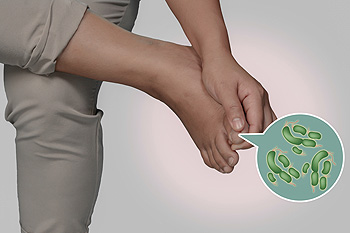 If you have noticed that your feet are scaling and itchy, you may have a condition that is referred to as athlete’s feet. The most common place of discomfort may occur in between the toes, and this may lead to the formation of blisters. This contagious fungal infection typically thrives in moist places including public pools and shower floors. There are several symptoms that are associated with this uncomfortable condition including peeling skin, a burning sensation on the soles of the feet or in between the toes, in addition to severe itching. To prevent the onset of athlete's foot, it is suggested that appropriate shoes are worn in locker rooms, public pools, showers, and surrounding areas. Additionally, choosing to wear shoes that consist of breathable materials may aid in controlling this condition. Cotton socks may absorb any excess sweat that exists, and this may help to maintain a level of comfort. Please consult with a podiatrist if you are afflicted with athlete’s foot to learn about correct treatment techniques that are right for you.
If you have noticed that your feet are scaling and itchy, you may have a condition that is referred to as athlete’s feet. The most common place of discomfort may occur in between the toes, and this may lead to the formation of blisters. This contagious fungal infection typically thrives in moist places including public pools and shower floors. There are several symptoms that are associated with this uncomfortable condition including peeling skin, a burning sensation on the soles of the feet or in between the toes, in addition to severe itching. To prevent the onset of athlete's foot, it is suggested that appropriate shoes are worn in locker rooms, public pools, showers, and surrounding areas. Additionally, choosing to wear shoes that consist of breathable materials may aid in controlling this condition. Cotton socks may absorb any excess sweat that exists, and this may help to maintain a level of comfort. Please consult with a podiatrist if you are afflicted with athlete’s foot to learn about correct treatment techniques that are right for you.
Athlete’s Foot
Athlete’s foot is often an uncomfortable condition to experience. Thankfully, podiatrists specialize in treating athlete’s foot and offer the best treatment options. If you have any questions about athlete’s foot, consult with one of our podiatrists from Pennsylvania. Our doctors will assess your condition and provide you with quality treatment.
What Is Athlete’s Foot?
Tinea pedis, more commonly known as athlete’s foot, is a non-serious and common fungal infection of the foot. Athlete’s foot is contagious and can be contracted by touching someone who has it or infected surfaces. The most common places contaminated by it are public showers, locker rooms, and swimming pools. Once contracted, it grows on feet that are left inside moist, dark, and warm shoes and socks.
Prevention
The most effective ways to prevent athlete’s foot include:
- Thoroughly washing and drying feet
- Avoid going barefoot in locker rooms and public showers
- Using shower shoes in public showers
- Wearing socks that allow the feet to breathe
- Changing socks and shoes frequently if you sweat a lot
Symptoms
Athlete’s foot initially occurs as a rash between the toes. However, if left undiagnosed, it can spread to the sides and bottom of the feet, toenails, and if touched by hand, the hands themselves. Symptoms include:
- Redness
- Burning
- Itching
- Scaly and peeling skin
Diagnosis and Treatment
Diagnosis is quick and easy. Skin samples will be taken and either viewed under a microscope or sent to a lab for testing. Sometimes, a podiatrist can diagnose it based on simply looking at it. Once confirmed, treatment options include oral and topical antifungal medications.
If you have any questions, please feel free to contact one of our offices located in Plymouth Meeting and Ambler, PA . We offer the newest diagnostic and treatment technologies for all your foot care needs.
How to Deal with Athlete's Foot
Athlete’s foot is a type of fungal infection that affects the skin on the feet. It is caused when the tinea fungus grows on the foot. It is possible to catch the fungus through direct contact with someone who has it or by touching a surface that is contaminated with it. This type of fungus thrives in warm, moist environments such as showers, locker room floors, and swimming pools. Your risk of getting it may also increase by wearing tight-fitting, closed-toe shoes, or by having sweaty feet.
Symptoms of athlete’s foot include itching, stinging or burning sensations between the toes. You may also experience toenails that are discolored, thick, crumbly, or toenails that pull away from the nail bed.
Your podiatrist may diagnose athlete’s foot by detecting these symptoms or by doing a skin test to see if there is a fungal infection present. The most common exam used to detect Athlete’s foot is a skin lesion potassium hydroxide exam. To use this method, your doctor will scrape off a small area of the infected skin and place it into potassium hydroxide. The potassium hydroxide will destroy the normal cells and leave the fungal cells untouched so that they are visible under a microscope.
There are a variety of treatment options for athlete’s foot. Some medications are miconazole (Desenex), terbinafine (Lamisil AT), clotrimazole (Lotrimin AF), butenafine (Lotrimin Ultra), and tolnaftate (Tinactin). While these options may be able to treat your fungus, it is best that you consult with a podiatrist in order to see which treatment option may work best for you.
In some cases, Athlete’s foot may lead to complications. A severe complication would be a secondary bacterial infection which may cause your foot to become swollen, painful, and hot.
There are ways that you can prevent athlete’s foot. Washing your feet with soap and water each day and drying them thoroughly is an effective way to prevent infections. You also shouldn’t share socks, shoes, or towels with other people. It is crucial that you wear shower sandals in public showers, around swimming pools, and in other public places. Additionally, you should make sure you wear shoes that can breathe and change your socks when your feet become sweaty. If you suspect that you have Athlete’s foot, you should seek help from a podiatrist as soon as possible.
Children and Sever’s Disease
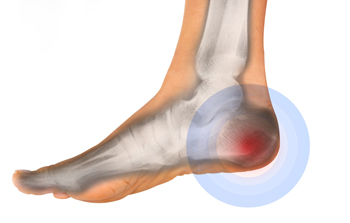 A common foot condition many children may endure is referred to as Sever’s disease. Despite the fact that this bone disorder of the heel may occur in any child, research has shown it may be more common in children who are involved in sporting activities. This type of foot ailment may develop as pressure is put on the heel growth plate, which may be a result of overstretched muscles and tendons. Some of the uncomfortable symptoms may include pain, swelling and tenderness in the back of the heel and surrounding areas. Patients who have one leg that is shorter than the other, a foot that rolls inward while walking, or is overweight may be more susceptible in developing Sever’s disease. If your child complains of heel pain, it is advised to seek the counsel of a podiatrist who can properly diagnose and treat Sever’s disease.
A common foot condition many children may endure is referred to as Sever’s disease. Despite the fact that this bone disorder of the heel may occur in any child, research has shown it may be more common in children who are involved in sporting activities. This type of foot ailment may develop as pressure is put on the heel growth plate, which may be a result of overstretched muscles and tendons. Some of the uncomfortable symptoms may include pain, swelling and tenderness in the back of the heel and surrounding areas. Patients who have one leg that is shorter than the other, a foot that rolls inward while walking, or is overweight may be more susceptible in developing Sever’s disease. If your child complains of heel pain, it is advised to seek the counsel of a podiatrist who can properly diagnose and treat Sever’s disease.
Sever's disease often occurs in children and teens. If your child is experiencing foot or ankle pain, see one of our podiatrists from Pennsylvania. Our doctors can treat your child’s foot and ankle needs.
Sever’s Disease
Sever’s disease is also known as calcaneal apophysitis, which is a medical condition that causes heel pain I none or both feet. The disease is known to affect children between the ages of 8 and 14.
Sever’s disease occurs when part of the child’s heel known as the growth plate (calcaneal epiphysis) is attached to the Achilles tendon. This area can suffer injury when the muscles and tendons of the growing foot do not keep pace with bone growth. Therefore, the constant pain which one experiences at the back of the heel will make the child unable to put any weight on the heel. The child is then forced to walk on their toes.
Symptoms
Acute pain – Pain associated with Sever’s disease is usually felt in the heel when the child engages in physical activity such as walking, jumping and or running.
Highly active – Children who are very active are among the most susceptible in experiencing Sever’s disease, because of the stress and tension placed on their feet.
If you have any questions, please feel free to contact one of our offices located in Plymouth Meeting and Ambler, PA . We offer the newest diagnostic and treatment technologies for all your foot and ankle injuries.
Sever's Disease
Sever’s disease, also known as calcaneal apophysitis is a common bone disorder that occurs during childhood. The disease is defined as an inflammation of the growth plate in the heel. When a child has a growth spurt, his heel bone grows faster than the muscles, tendons, and ligaments in his leg. This disease is a result of overuse. The people who are most likely to be affected by this disease are children who are in a growth spurt, especially boys who are from the ages of 5 to 13 years old. 60% of children with Sever’s disease have both heels involved.
Symptoms of this disease are heel pain that intensifies during running and jumping activities. The pain is typically localized to the posterior part of the heel. Symptoms may be severe, and they can easily interfere with daily activities. Children who play soccer, baseball, and basketball are more likely to develop Sever’s disease.
Your doctor will diagnose your child based on his or her symptoms, x-rays are generally not helpful in diagnosing this disease. Your doctor may examine both heels and ask your child questions about his or her activity level in sports. Your doctor may then use the squeeze test on your child’s heel to see if there is any pain. Nevertheless, some doctors might still use x-rays to rule out any other issues such as fractures, infections, and tumors.
Sever’s disease can be prevented by maintaining good flexibility while your child is growing. Another prevention method is to wear good-quality shoes that have firm support and a shock-absorbent sole. Sever’s disease can be treated by ceasing any activity that causes heel pain. You should apply ice to the injured heel for 20 minutes 3 times a day. Additionally, orthotics should be used for children who have high arches, flat feet, or bowed legs.
If you suspect your child has Sever’s disease, you should make an appointment with your podiatrist to have his or her foot examined. Your doctor may recommend nonsteroidal anti-inflammatory drugs (NSAIDs), such as ibuprofen or naproxen to relieve pain. In more severe cases, your child may need a cast to rest his or her heel. Fortunately, Sever’s disease does not cause long-term foot problems. After treatment, your child should start to feel better within two weeks to two months.
Are Flat Feet Considered to be a Serious Condition?
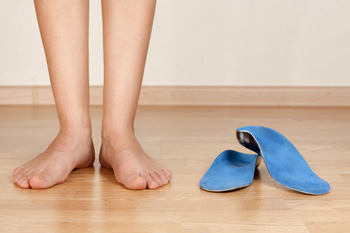 For many people, having flat feet may be a condition that generally causes little or no concern. When this condition occurs, the feet will lay flat on the ground as a result of an absent arch. Research has shown that most babies are born with flat feet, and the arches will typically develop at approximately six years of age. While flat feet or fallen arches do not hinder daily activities for many people, there may be symptoms that may cause discomfort for certain people. These may include the feet feeling stiff or experiencing a numbing sensation. Additionally, some people may have difficulty in balancing or walking, or one foot may possibly be affected. Possible treatment options may include wearing shoes that have a low heel, or using insoles in the shoes, which may offer adequate support. It’s suggested to speak with a podiatrist who can advise you on what the best treatment options are for you.
For many people, having flat feet may be a condition that generally causes little or no concern. When this condition occurs, the feet will lay flat on the ground as a result of an absent arch. Research has shown that most babies are born with flat feet, and the arches will typically develop at approximately six years of age. While flat feet or fallen arches do not hinder daily activities for many people, there may be symptoms that may cause discomfort for certain people. These may include the feet feeling stiff or experiencing a numbing sensation. Additionally, some people may have difficulty in balancing or walking, or one foot may possibly be affected. Possible treatment options may include wearing shoes that have a low heel, or using insoles in the shoes, which may offer adequate support. It’s suggested to speak with a podiatrist who can advise you on what the best treatment options are for you.
Flatfoot is a condition many people suffer from. If you have flat feet, contact one of our podiatrists from Pennsylvania. Our doctors will treat your foot and ankle needs.
What Are Flat Feet?
Flatfoot is a condition in which the arch of the foot is depressed and the sole of the foot is almost completely in contact with the ground. About 20-30% of the population generally has flat feet because their arches never formed during growth.
Conditions & Problems:
Having flat feet makes it difficult to run or walk because of the stress placed on the ankles.
Alignment – The general alignment of your legs can be disrupted, because the ankles move inward which can cause major discomfort.
Knees – If you have complications with your knees, flat feet can be a contributor to arthritis in that area.
Symptoms
- Pain around the heel or arch area
- Trouble standing on the tip toe
- Swelling around the inside of the ankle
- Flat look to one or both feet
- Having your shoes feel uneven when worn
Treatment
If you are experiencing pain and stress on the foot you may weaken the posterior tibial tendon, which runs around the inside of the ankle.
If you have any questions please feel free to contact one of our offices located in Plymouth Meeting and Ambler, PA . We offer the newest diagnostic and treatment technologies for all your foot and ankle needs.
Flat Feet
Flatfoot is a condition that occurs when the arches on the foot are flattened, which allows the soles of the feet to touch the floor. Flatfoot is a common condition and it is usually painless.
Throughout childhood, most people begin to develop arches in their feet, however, some do not. Those who do not develop arches are left with flatfoot. The pain associated with flat feet is usually at its worse when engaging in activity. Another symptom that may occur with those who have this condition is swelling along the inside of the ankle.
It is also possible to have flexible flatfoot. Flexible flatfoot occurs when the arch is visible while sitting or standing on the tiptoes, but it disappears when standing. People who have flexible flatfoot are often children and most outgrow it without any problems.
There are some risk factors that may make you more likely to develop flatfoot. Those who have diabetes and rheumatoid arthritis have an increased risk of flatfoot development. Other factors include aging and obesity.
Diagnosis for flat feet is usually done by a series of tests by your podiatrist. Your podiatrist will typically try an x-ray, CT scan, ultrasound, or MRI on the feet. Treatment is usually not necessary for flat foot unless it causes pain. However, therapy is often used for those who experience pain in their flat feet. Some other suggested treatment options are arch supports, stretching exercises, and supportive shoes.
The Benefits of Using Orthotics
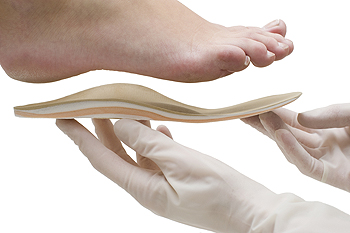 Many people have chosen to use orthotics in their shoes for the primary reason of relieving pain and discomfort that may be associated with certain foot conditions. There may be many beneficial reasons for using orthotics including maintaining proper arch support, relieving uncomfortable pressure the feet may endure from daily activities, and to aid in diminishing heel pain. Research has shown that body weight may be easier to balance on the feet when the proper orthotics are used. A common reason to use orthotics may be overpronation, which is the term referred to when the foot rolls too far inward. If left untreated, it may cause a plethora of additional foot ailments, including bunions, calluses, and plantar fasciitis, which is an inflammation of the tissue that runs along the sole of the foot. If you would like additional information about orthotics, please consult with a podiatrist who can properly measure your foot for these devices.
Many people have chosen to use orthotics in their shoes for the primary reason of relieving pain and discomfort that may be associated with certain foot conditions. There may be many beneficial reasons for using orthotics including maintaining proper arch support, relieving uncomfortable pressure the feet may endure from daily activities, and to aid in diminishing heel pain. Research has shown that body weight may be easier to balance on the feet when the proper orthotics are used. A common reason to use orthotics may be overpronation, which is the term referred to when the foot rolls too far inward. If left untreated, it may cause a plethora of additional foot ailments, including bunions, calluses, and plantar fasciitis, which is an inflammation of the tissue that runs along the sole of the foot. If you would like additional information about orthotics, please consult with a podiatrist who can properly measure your foot for these devices.
If you are having discomfort in your feet and would like to try orthotics, contact one of our podiatrists from Pennsylvania. Our doctors can provide the care you need to keep you pain-free and on your feet.
What Are Orthotics?
Orthotics are inserts you can place into your shoes to help with a variety of foot problems such as flat feet or foot pain. Orthotics provide relief and comfort for minor foot and heel pain but can’t correct serious biomechanical problems in your feet.
Over-the-Counter Inserts
Orthotics come in a wide variety of over-the-counter inserts that are used to treat foot pain, heel pain, and minor problems. For example, arch supports can be inserted into your shoes to help correct overarched or flat feet, while gel insoles are often used because they provide comfort and relief from foot and heel pain by alleviating pressure.
Prescription Orthotics
If over-the-counter inserts don’t work for you or if you have a more severe foot concern, it is possible to have your podiatrist prescribe custom orthotics. These high-quality inserts are designed to treat problems such as abnormal motion, plantar fasciitis, and severe forms of heel pain. They can even be used to help patients suffering from diabetes by treating foot ulcers and painful calluses and are usually molded to your feet individually, which allows them to provide full support and comfort.
If you are experiencing minor to severe foot or heel pain, it’s recommended to speak with your podiatrist about the possibilities of using orthotics. A podiatrist can determine which type of orthotic is right for you and allow you to take the first steps towards being pain-free.
If you have any questions please contact one of our offices located in Plymouth Meeting and Ambler, PA . We offer the newest diagnostic and treatment technologies for all your foot and ankle needs.
Ankle Foot Orthotics for Athletes
Ankle foot orthotics are shoe inserts that offer support to control the placement and movement of the ankle, correct deformities, and compensate for weakness. These inserts are used to stabilize the foot and ankle and provide toe clearance during the swing phase of gate.
Athletes often suffer foot problems because their feet are not being supported within the shoe. Ankle and foot orthotics are custom made inserts that alleviate stress on the foot. However custom orthotics should be prescribed by a podiatrist who specializes in customized footwear and orthotics design. These inserts are used by athletes for different reasons. Runners use orthotics to absorb shock at heel contact and to set up the forefoot for push-off. Basketball players wear them to control their forefeet while jumping and running.
The two main types of orthotics are over-the-counter orthotics and custom-made orthotics. To be eligible for custom orthotics, an examination of the foot and ankle will need to be completed. Afterward, both the foot and ankle will need to be casted and fitted for the proper orthotic. When the fitting process is complete, adjustments can be made to make sure everything fits perfectly.
Over the counter orthotics tend to be more popular than custom fit ones. Athletes who have less severe aches and pains in the foot, ankle or lower back area can use the over-the-counter version of orthotics. Unfortunately, over-the-counter orthotics tend to not work in treating severe injuries or ailments. Whenever you suspect you may need an ankle foot orthotic, you should consult with your podiatrist to determine which type of orthotic is right for you.
What is Tarsal Tunnel Syndrome Caused By?
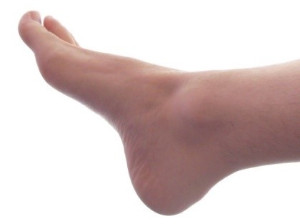 If you experience discomfort and pain on the inside of your foot, you may have what is referred to as tarsal tunnel syndrome. This condition may also be called TTS, and may result from constant overuse of the ankle and foot. Activities that can cause this ailment to develop may include walking, exercising or running and can also occur from a serious injury. The surrounding area may become inflamed as a result of damaged nerves, which may have a negative impact in performing daily activities. Research has shown that early diagnosis and treatment of tarsal tunnel syndrome may accelerate the healing process, which may typically begin with resting the foot. Severe cases of this condition may be treated with orthotics or physical therapy. It’s suggested to speak with a podiatrist as quickly as possible to ensure that a proper diagnosis is performed and the correct treatment options are discussed.
If you experience discomfort and pain on the inside of your foot, you may have what is referred to as tarsal tunnel syndrome. This condition may also be called TTS, and may result from constant overuse of the ankle and foot. Activities that can cause this ailment to develop may include walking, exercising or running and can also occur from a serious injury. The surrounding area may become inflamed as a result of damaged nerves, which may have a negative impact in performing daily activities. Research has shown that early diagnosis and treatment of tarsal tunnel syndrome may accelerate the healing process, which may typically begin with resting the foot. Severe cases of this condition may be treated with orthotics or physical therapy. It’s suggested to speak with a podiatrist as quickly as possible to ensure that a proper diagnosis is performed and the correct treatment options are discussed.
Tarsal tunnel syndrome can be very uncomfortable to live with. If you are experiencing tarsal tunnel syndrome, contact one of our podiatrists of Pennsylvania. Our doctors can provide the care you need to keep you pain-free and on your feet.
Tarsal Tunnel Syndrome
Tarsal tunnel syndrome, which can also be called tibial nerve dysfunction, is an uncommon condition of misfiring peripheral nerves in the foot. The tibial nerve is the peripheral nerve in the leg responsible for sensation and movement of the foot and calf muscles. In tarsal tunnel syndrome, the tibial nerve is damaged, causing problems with movement and feeling in the foot of the affected leg.
Common Cause of Tarsal Tunnel Syndrome
- Involves pressure or an injury, direct pressure on the tibial nerve for an extended period of time, sometimes caused by other body structures close by or near the knee.
- Diseases that damage nerves, including diabetes, may cause tarsal tunnel syndrome.
- At times, tarsal tunnel syndrome can appear without an obvious cause in some cases.
The Effects of Tarsal Tunnel Syndrome
- Different sensations, an afflicted person may experience pain, tingling, burning or other unusual sensations in the foot of the affected leg.
- The foot muscles, toes and ankle become weaker, and curling your toes or flexing your foot can become difficult.
- If condition worsens, infections and ulcers may develop on the foot that is experiencing the syndrome.
A physical exam of the leg can help identify the presence of tarsal tunnel syndrome. Medical tests, such as a nerve biopsy, are also used to diagnose the condition. Patients may receive physical therapy and prescriptive medication. In extreme cases, some may require surgery.
If you have any questions please feel free to contact one of our offices located in Plymouth Meeting and Ambler, PA . We offer the newest diagnostic and treatment technologies for all your foot and ankle needs.
